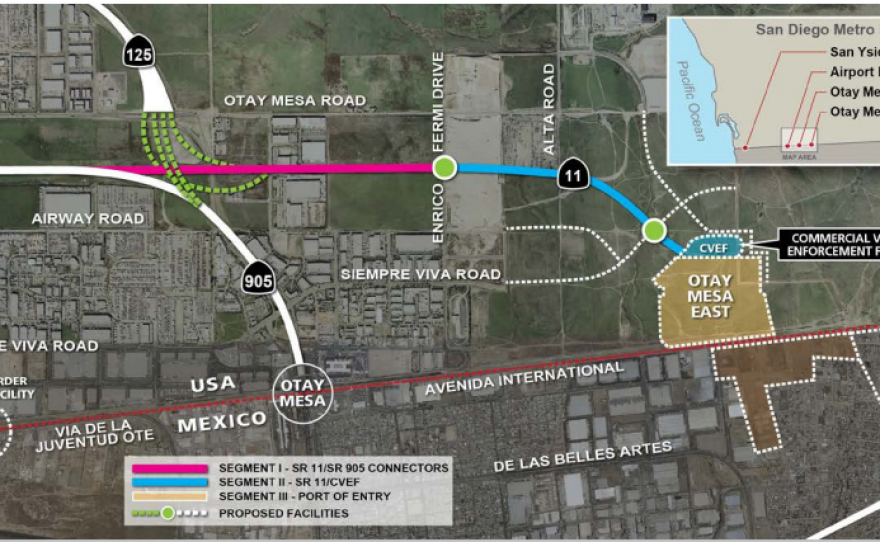California and San Diego authorities expect to begin work by the end of 2013 on what could be the region’s first toll-funded border crossing between Mexico and the United States.
Authorities hope the new port of entry will help alleviate long border waits, boost the regional economy, and perhaps most importantly, pay for itself.
“We’re aiming to add enough value to the border crossing that people would be willing to pay for it,” said Marney Cox, Chief Economist at the San Diego Association of Governments (SANDAG). “It would be sufficient to pay for the capital…as well as the people required to operate it and maintain it,” he said.
Under the initial plan, the port of entry would have 10 lanes for commercial vehicles and 10 lanes for passenger vehicles.
SANDAG and Caltrans, co-leaders on the project, are finishing up a traffic and revenue study that will help determine whether these are realistic goals.
The new border crossing would be located several miles to the east of the Otay Mesa Port of Entry. It would connect with major highways in California and Baja California.
The toll charge for crossing into the U.S. would fluctuate depending on the amount of traffic at all of San Diego’s other ports of entry. And it would be managed to keep the wait time at the new crossing down to 20 minutes.
“Pricing will allow us to determine the length of the line,” Cox said. As the theory goes, when the toll increases fewer people would want to pay, opting instead to wait in a longer line at one the free border crossings.
That level of coordination would require reliable information on border wait times at all San Diego-Tijuana area ports of entry, Cox says, something that’s currently lacking.
The California Transportation Commission approved the three phases of the project last year. Currently, funding is only secured for the first phase: construction on a segment of road that would connect the future port of entry with California state routes 905 and 125.
Caltrans Corridor Director Mario Orso said the contract for this first phase would go out to bid later this year, with construction expected to begin between December and January.







